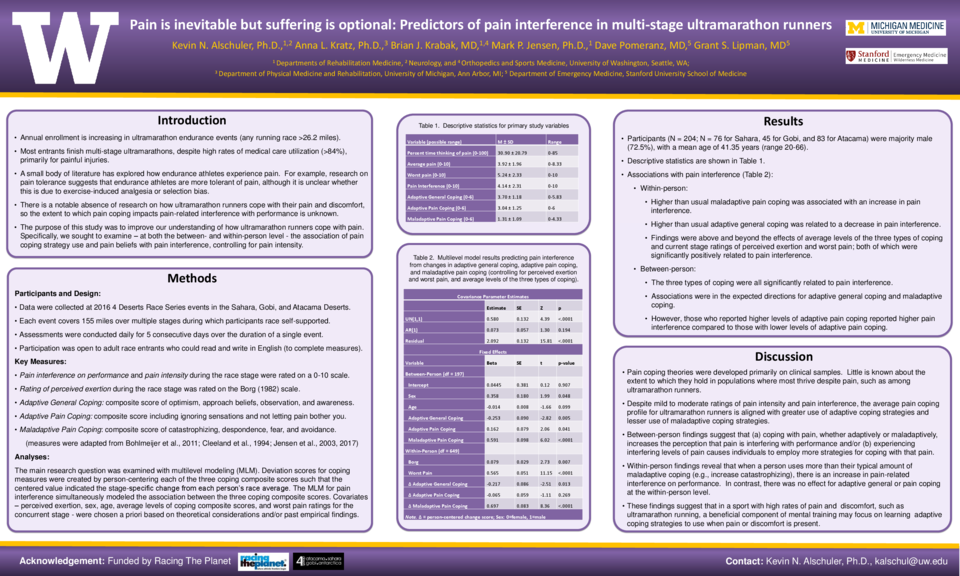Abstract
Introduction: Ultramarathon endurance events (any running race >26.2 miles) are increasingly popular. Most entrants finish multi-stage ultramarathons, despite high rates of medical care utilization (>84%), primarily for painful injuries.
Methods: We collected data from entrants in a series of six-day, 155 mile ultramarathon events in the Sahara, Gobi, and Atacama deserts, to understand how pain coping strategies related to pain outcomes during the events. Consistent with pain coping theory, we considered whether person-level changes in pain-related coping and beliefs (pain catastrophizing, ignoring pain, fear of pain, and avoidance of pain) influenced pain outcomes (pain intensity and pain interference) over the course of the race.
Results: The sample (N=204) was 73% male with an average age of 41.4y (±10.3y). After each of five stages, participants completed measures of coping and beliefs, pain intensity and pain interference. Ratings for worst pain (Mean=4.91±2.35) and pain interference (Mean=3.82±2.16) were in the moderate intensity range; participants reported low levels of maladaptive coping. Multilevel model results indicated that when a competitor reported higher than usual pain catastrophizing, ignoring pain, fear of pain, or avoidance, they reported higher levels of worst pain and pain interference (all p<0.05). The associations between predictor variables and pain outcomes were above and beyond the effects of ratings of physical exertion, person-average worst pain/pain interference, and stage-specific worst pain (for pain interference outcome).
Conclusion: In summary, although ultramarathon runners experience moderate levels of pain intensity and interference, they use maladaptive coping strategies less often than patient populations. Despite this difference in coping, competitors were similar to clinical populations in that greater endorsement of maladaptive coping and beliefs was associated with worse pain and greater pain interference. Thus, the same self-improvement principles appear to be relevant to this athlete population; optimizing pain coping strategies may reduce pain interference and allow for greater performance outcomes.






